Abstract
OBJECTIVE: The authors documented the localization and frequency of lymphatic spread in squamous cell carcinoma of the thoracic esophagus and evaluated the influence of radical systematic lymph node dissection on patient survival. SUMMARY BACKGROUND DATA: From accumulated surgical experience, it was suggested that some of the patients with lymph nodal involvement from cancer could be cured by its clearance. However, it is only recently that cancer of the esophagus has been evaluated in terms of analyzing lymphatic spread and results of lymphadenectomy. METHODS: Among 1298 patients admitted to the Toranomon Hospital between 1973 and 1993, 913 (70.3%) had resections, including curative and palliative procedures. For this study, 717 patients with TNM RO (resection with no residual tumor at operation in TNM classification) were analyzed. Survival was compared between groups of patients with less extensive thoracoabdominal (two-field) dissections and extensive collothoracoabdominal (three-field) dissections. RESULTS: Comparative study revealed that 5-year survival rate for TNM RO patients after free-field dissection (55.0%) was significantly better (log rank test, p = 0.0013) than the rate after two-field dissection (38.3%). The results were particularly significant in subgroups with stage III and IV (because of nodal factor). Overall 5-year survival rate after all resections was 42.4%. CONCLUSIONS: The role of radical lymph node dissection in cancer of the thoracic esophagus evaluated. Long-term survival was compared between two groups with two- and three-field dissection. It was concluded that survival rate was significantly better in patients with extensive three-field dissection.
Full text
PDF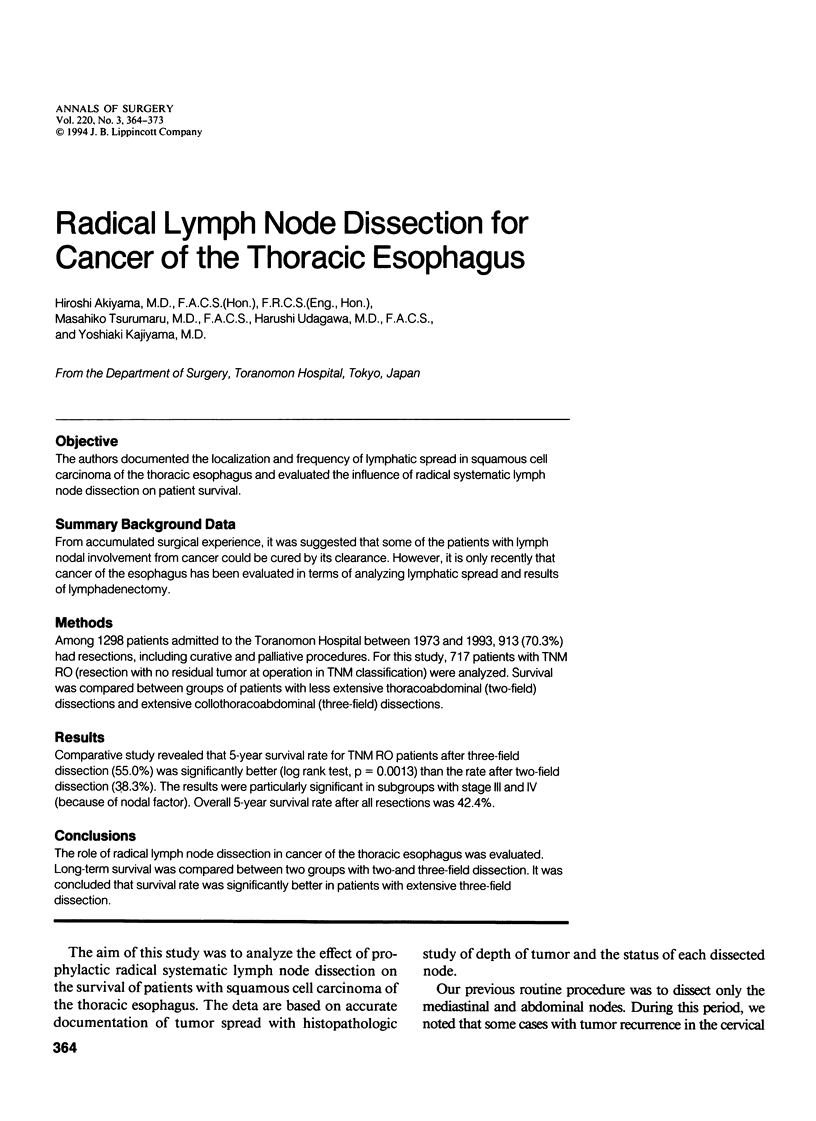
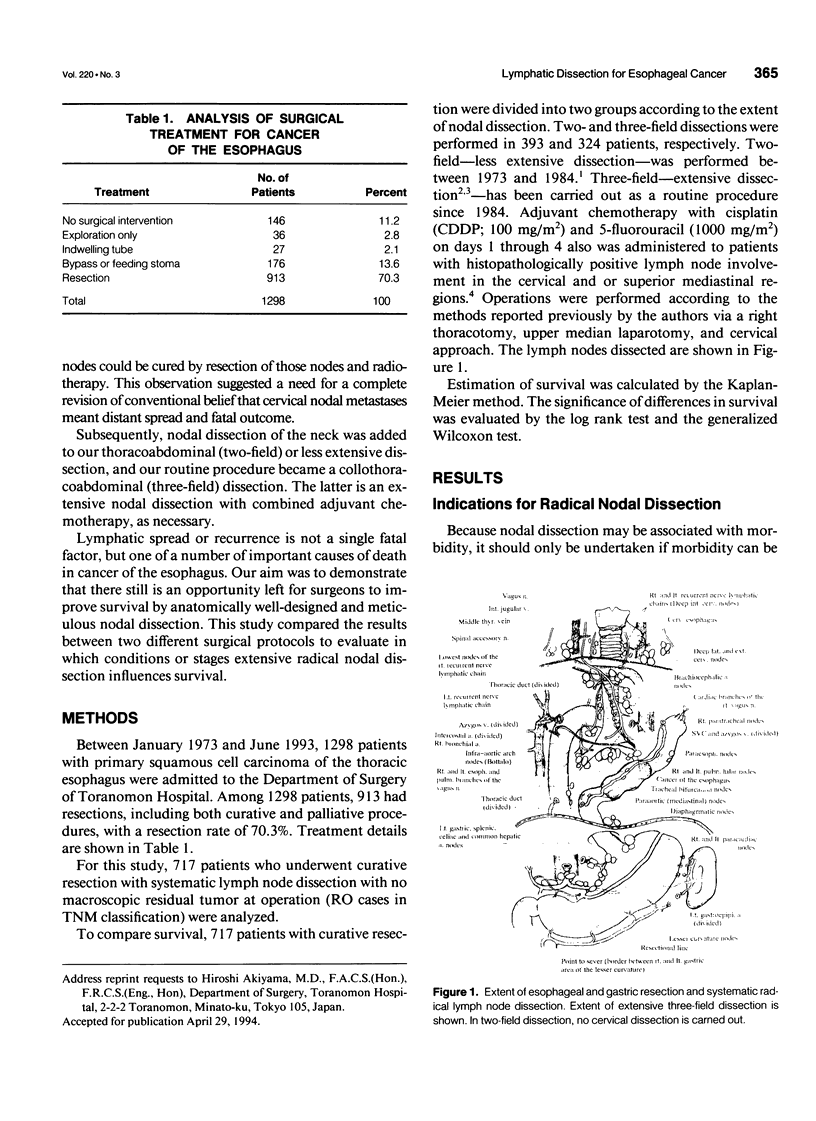
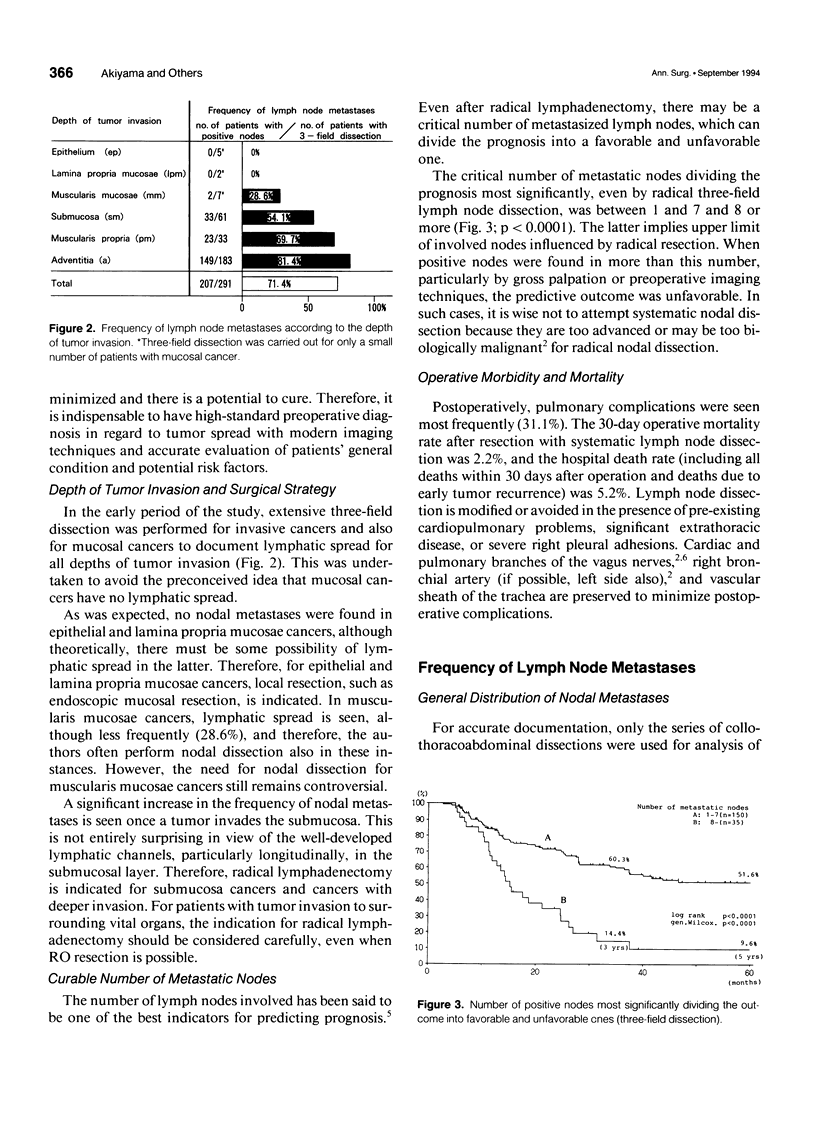
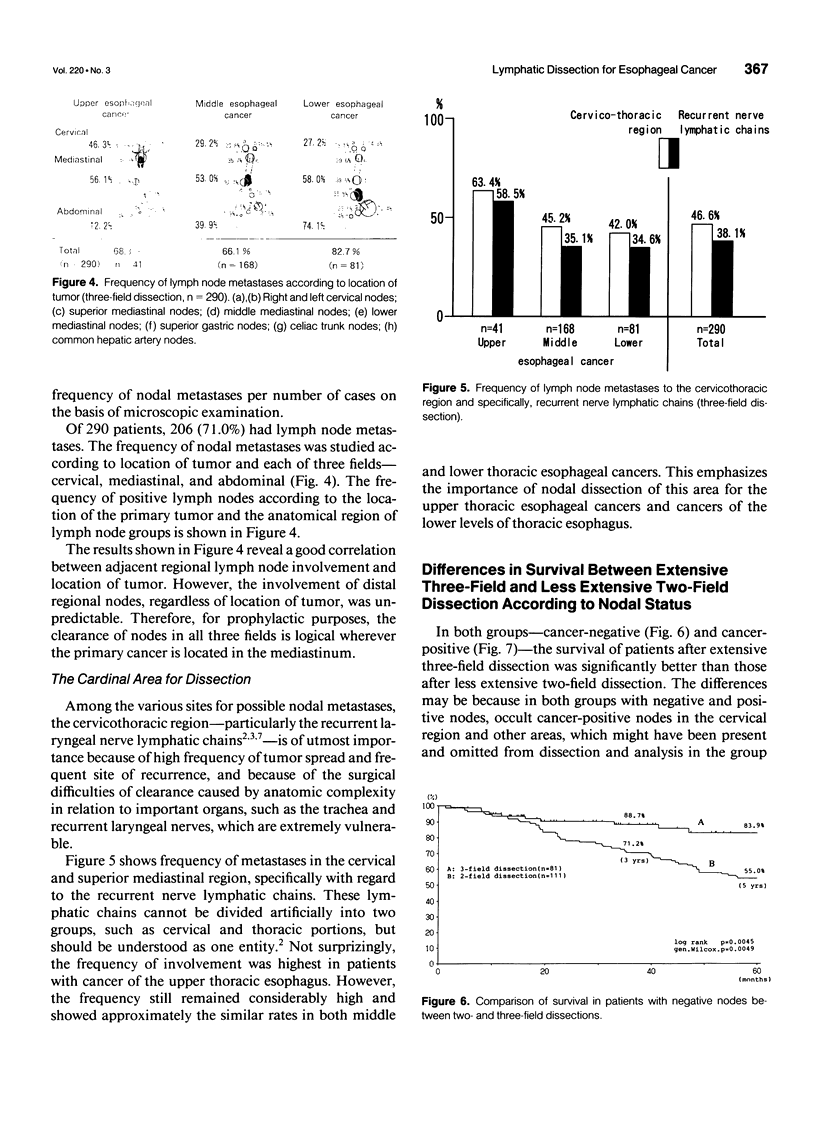
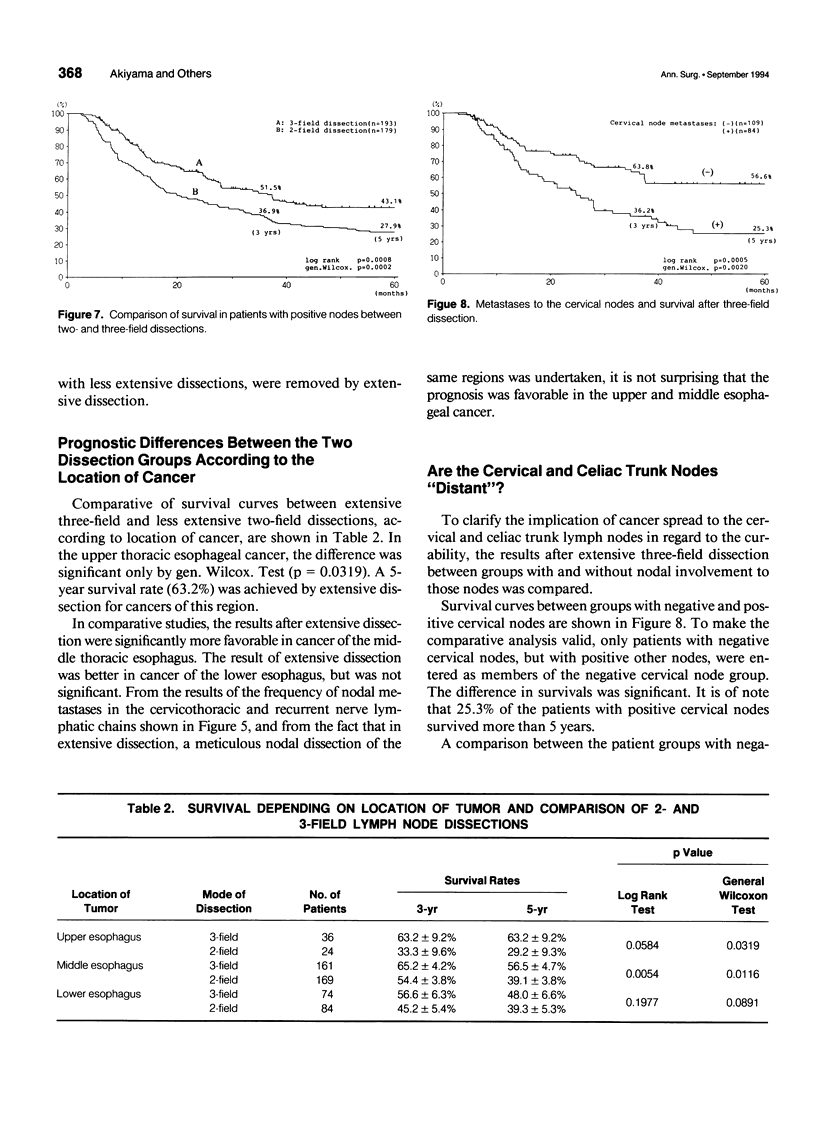

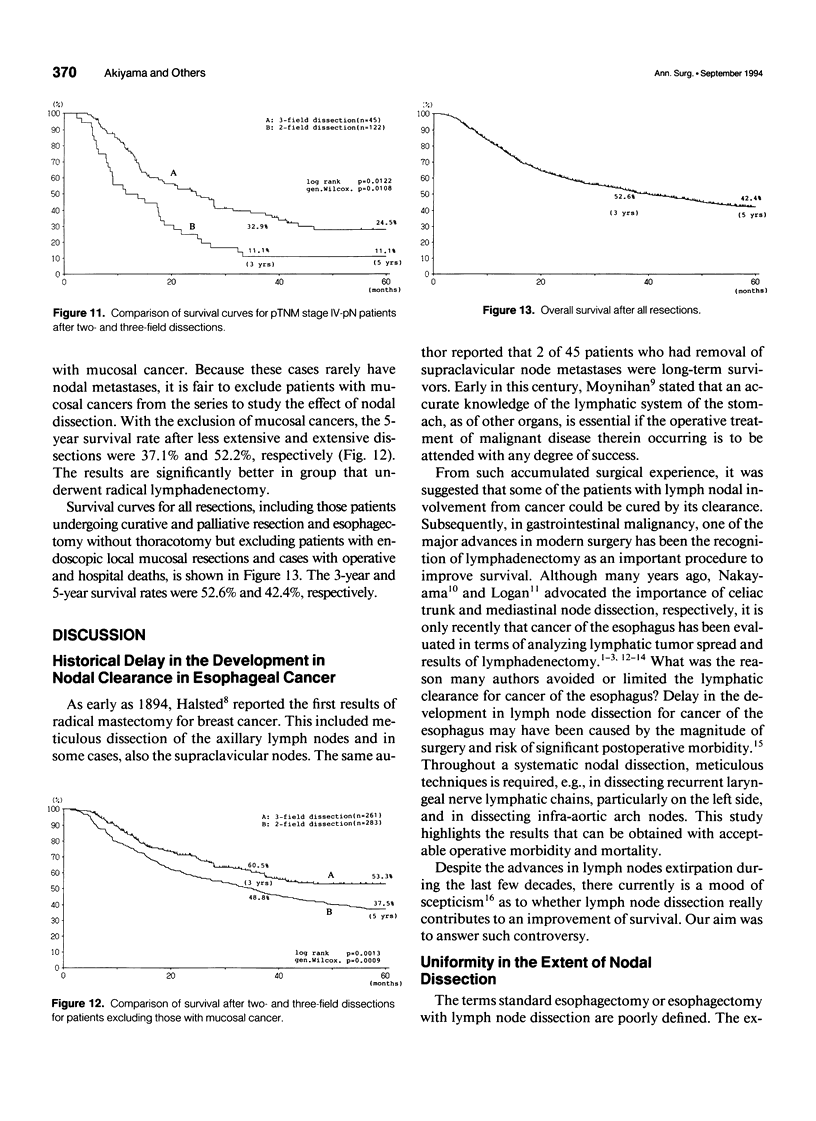
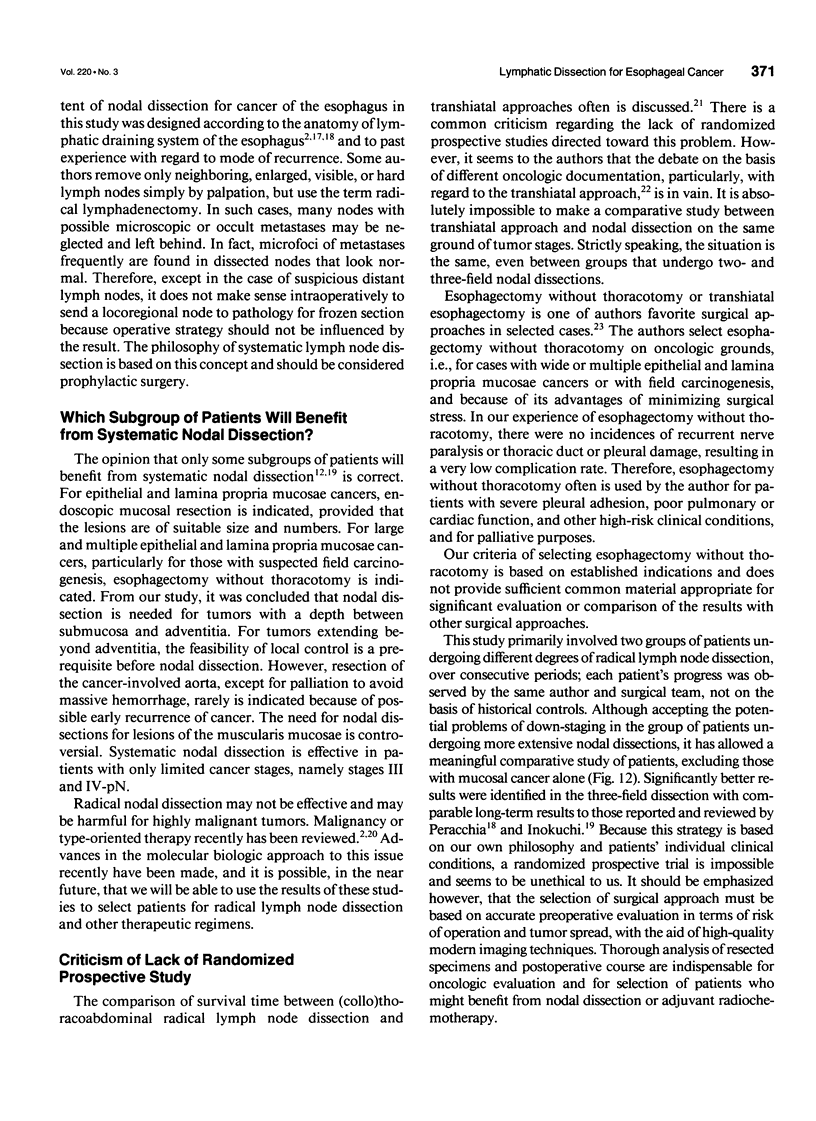
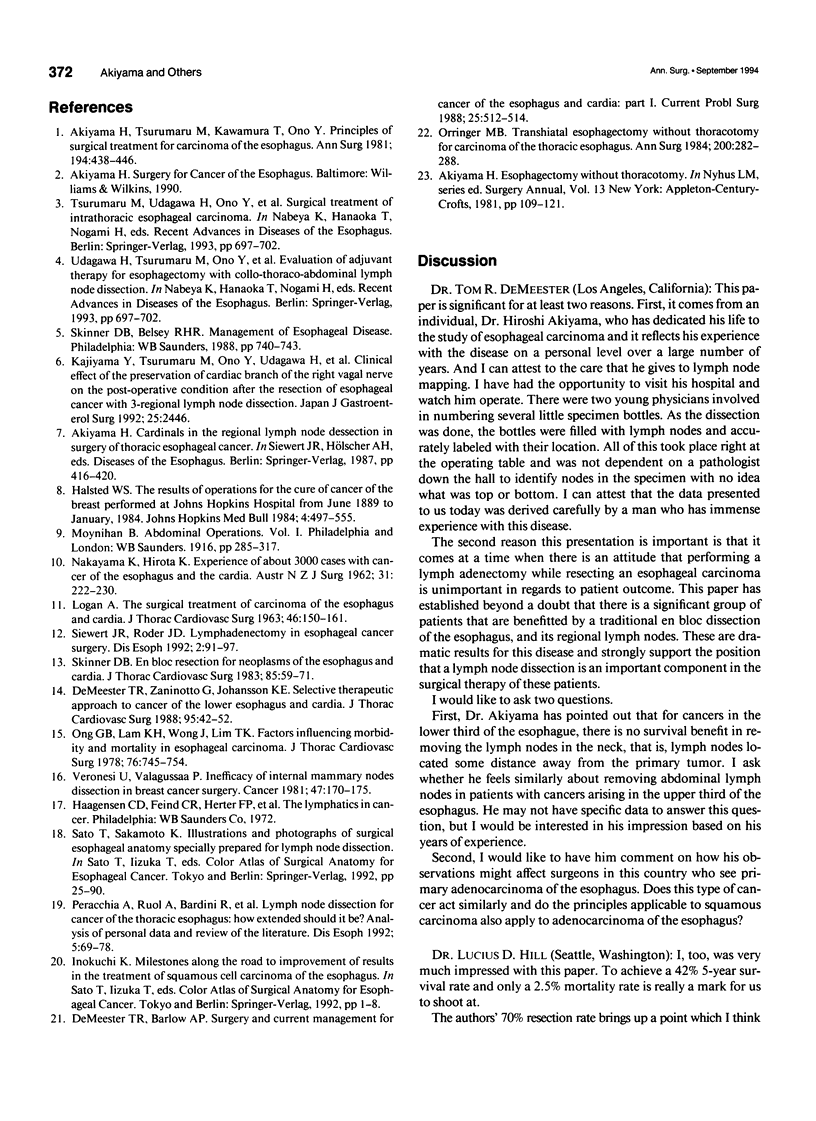
Selected References
These references are in PubMed. This may not be the complete list of references from this article.
- Akiyama H., Tsurumaru M., Kawamura T., Ono Y. Principles of surgical treatment for carcinoma of the esophagus: analysis of lymph node involvement. Ann Surg. 1981 Oct;194(4):438–446. doi: 10.1097/00000658-198110000-00007. [DOI] [PMC free article] [PubMed] [Google Scholar]
- DeMeester T. R., Zaninotto G., Johansson K. E. Selective therapeutic approach to cancer of the lower esophagus and cardia. J Thorac Cardiovasc Surg. 1988 Jan;95(1):42–54. [PubMed] [Google Scholar]
- LOGAN A. THE SURGICAL TREATMENT OF CARCINOMA OF THE ESOPHAGUS AND CARDIA. J Thorac Cardiovasc Surg. 1963 Aug;46:150–161. [PubMed] [Google Scholar]
- NAKAYAMA K., HIROTA K. Experiences of about 3,000 cases with cancer of the oesophagus and the cardia. Aust N Z J Surg. 1962 Feb;31:222–230. doi: 10.1111/j.1445-2197.1962.tb03266.x. [DOI] [PubMed] [Google Scholar]
- Ong G. B., Lam K. H., Wong J., Lim T. K. Factors influencing morbidity and mortality in esophageal carcinoma. J Thorac Cardiovasc Surg. 1978 Dec;76(6):745–754. [PubMed] [Google Scholar]
- Orringer M. B. Transhiatal esophagectomy without thoracotomy for carcinoma of the thoracic esophagus. Ann Surg. 1984 Sep;200(3):282–288. doi: 10.1097/00000658-198409000-00005. [DOI] [PMC free article] [PubMed] [Google Scholar]
- Skinner D. B. En bloc resection for neoplasms of the esophagus and cardia. J Thorac Cardiovasc Surg. 1983 Jan;85(1):59–71. [PubMed] [Google Scholar]
- Veronesi U., Valagussa P. Inefficacy of internal mammary nodes dissection in breast cancer surgery. Cancer. 1981 Jan 1;47(1):170–175. doi: 10.1002/1097-0142(19810101)47:1<170::aid-cncr2820470128>3.0.co;2-c. [DOI] [PubMed] [Google Scholar]


